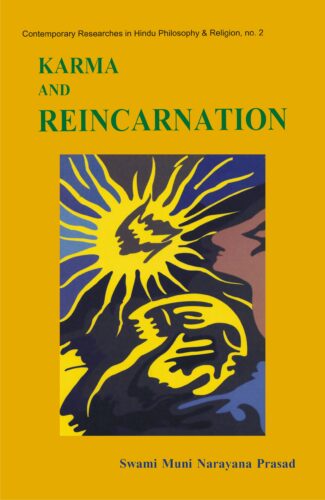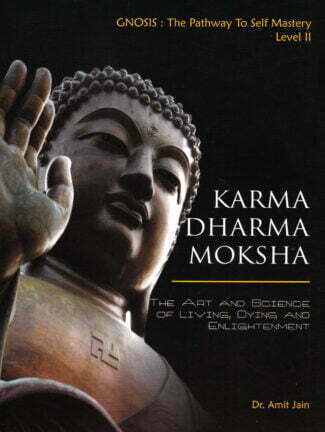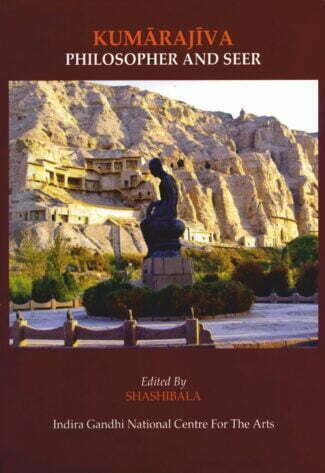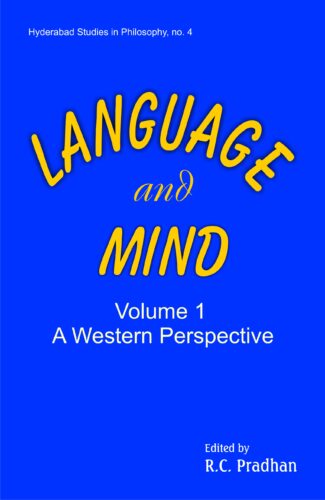Showing 111–120 of 270 results
The Krama School of the Trika Saivism of Kashmir, more familiar as Kalikrama in the contemporary parlance, has turned out to be the most crucial among the monistic Saiva traditions of medieval Kashmir after the Pratyabhijna school, a scenario people could hardly envisage six decades back when it first came to the notice of modern scholarship. The doctrine of Kalikrama, lit. sequential order of consciousness deities called Kalis, constitutes the most pivotal aspect of this school marked by a synchronous resonance between the esoteric/Tantric and cognitive/metaphysical undercurrents of the system.
In order to delve deeper into the doctrine of Kalikrama the present monograph does some loud thinking in three important areas: (a) the role of cognitivization in the ultimate realization; (b) the theoretical background of the mystical experience built around the consciousness deity(ies); and (c) the inconclusiveness of the hidden meaning posing an epistemological barrier in the study of an esoteric Tantric tradition. In all these areas one cannot miss the imprints of Abhinavagupta’s profound contribution. As such, the present study journeys into three directions: (1) a short genealogy of modern Krama studies; (2) the epistemology of the esoteric internalization embodied in the doctrine of Kalikrama; and (3) the role played by Abhinavagupta as its foremost architect. As such, the present study needs be construed as a small step towards discovering the intrinsic epistemological ethos of an esoteric Tantric tradition.

This work focuses on Kants concern with the problem of moral motivation. It argues that there is a gap between objectively conceived principle and subjective motivation, and aesthetic experience of the sublime phenomenon of utmost existential importance fills this gap.
Kant’s Concept of the Sublime: A Pathway to the Numinous focuses attention on Kant’s concern with the problem of moral motivation, the significance of the aesthetic experience, particularly the experience of the Sublime in terms of his overall concern with morality. As the Sublime is considered in the context of moral motivation, this is a new approach. The work argues that the importance of knowledge of the existence of a supersensible ground of ourselves and our actions lies in its role as motivation. There is a gap between objectively conceived principle and subjective motivation. The aesthetic experience of the Sublime provides an experience that helps fill this gap. There is a moral feeling that precedes the Categorical Imperative in spite of the second Critique’s argument that the feeling of respect follows from awareness of the moral law. The aesthetic experience is a phenomenon of the utmost existential importance. For Kant the aesthetic experience specially the experience of the Sublime, is phenomenologically important to him, as it helped in pursuing his life long moral project. The Kantian corpus heightens his concern with the problem of moral motivation and his thought on feeling a motive capable of moving the existing individual to subordinate the fulfillment of the subjective desire in favour of the objectively conceived universal law. Once this concern is properly understood, Kant’s importance to the connection between the feeling of the Sublime and our awareness of our known supersensible faculty becomes clear. The publication of this book coincides with the commemoration of 200 years of Kant’s death.

Swami Muni Narayana Prasad studies the doctrinal beliefs of karma and reincarnation from the viewpoint of an advaitin, developing insights from his studies of the Upanisads, the Bhagavad Gita, the Brahma Sutras and the works of Narayana Guru.
The atman (soul), in the Eastern belief system, is eternal, immortal. The phenomenon of (physical) death is, thus, nothing but its disembodiment and its reincarnation in a new body. And what determine as atmans choice of a new body is the law of karma the merits and demerits of ones actions in the present life. The notions of karma and reincarnation constitute the fundamental tenets of Indian thinking; though these, like many other doctrinal beliefs, are hard to prove/disprove in purely rationalistic or even empirical terms. Swami Muni Narayana Prasad looks afresh at these age-old doctrinal beliefs from the viewpoint of an Advaitin (non-dualist), developing stimulating insights from his studies of the Upanishads, the Bhagavad Gita the Brahma Sutras and, these besides, the works of his mentor: Narayana Guru. Contextually, among other questions, his book also dwells on Ultimate Reality, Birth and Death, and the Two Paths: Devayana (the path of gods) and Pitriyana (the path of manes), which either the souls take to after death.

This book is a manual on the purpose of human life, and of human death and enlightenment. It explains the teachings of vulnerable master Samael Aun Weor. The book reveals the method of fulfilling the three aims of life artha, kama and dharma, and shows that without shunning sex and money, one can achieve the ultimate goal in life, i.e. moksha.
Dr Amit Jain’s simplistic writing, insightful perspective and enthusiasm make this book an excellent manual for anyone who wants to know the purpose of human life, about death and enlightenment. Dr Jain in his simple words explains the teachings of Venerable Master Samael Aun Weor. He beautifully reveals how by fulfilling the first three aims of human life, i.e. artha (money), kama (sex) and dharma (cosmic principles), without shunning sex and money, one can achieve the fourth and ultimate aim of human life the self realization/moksha. You may read it for a better understanding of karma, dharma and moksha.
If you have been in quest of enlightenment, this book will unfold the wisdom which only the masters know. Also an eye-opener on why we suffer, how we acquire negative karma and how to get what we want.

Swami Vivekananda speaks of two types of Karma-Yoga: work for work’s sake and work for God’s sake in this volume. Work for work’s sake means that one works selflessly, without worrying about the existence of God or any other metaphysical doctrine. Work for God’s sake is the normal way in which most of the saints have pursued their spiritual journey.
Karma-Yoga, a highly reflective and spiritual volume, is the reproduction of eight illuminating lectures that Swami Vivekananda delivered during December 1895 to January 1896 in New York.
The contents of this volume calls for repeated reading, comprehension, contemplation and is highly useful to be reflected on. Here Swami Vivekananda is speaking of two types of Karma-Yoga: work for work’s sake and work for God’s sake. Work for work’s sake means that one works selflessly, without worrying about the existence of God or any other metaphysical doctrine. Work for God’s sake is the normal way in which most of the saints have pursued their spiritual journey. And it is the suggested way for any spiritual aspirant.
This book reminds and invites us to redefine our approach to work and directs us to absorb the most ideal and desirable way of doing it irrespective of what we are and in what position we are.

Amongst the traditions of the non-dual Kashmir Shavism, Krama and Kula have dominated the attention of the world scholarship. Going by the testimony of Jayaratha, the seminal notions of tantra-prakriya and kula-prakriya have largely determined Abhinavan enunciation of the intra-systemal variety. This monograph addresses all this in necessary detail charting historical evolution together with bringing to light some unpublished minor but useful tracts.
From within the fold of the tantric Shaiva non-dualism of Kashmir, Kula and Krama are the traditions that have fascinated most of the modern Indological scholarship the world over. This monograph, in the first place, attempts to approach the two traditions against the backdrop of their historical and evolutionary growth.
From this presentation emerges the fact that Krama is a living mode of contemplation and thought even today. If one goes by Jayaratha, the seminal processes of Kula-prakriya and Tantra-prakriya have been largely instrumental in formulating Abhinavan exegesis of the intra-systemal diversity. This process-centric approach has gone a long way in defining the tantric meaning, typological classification and distinctive ritual praxis. This aspect was first noticed and underscored by the author in his Krama Trantricism of Kashmir. The problem, since then, has been constantly engaging the mind of the scholars eliciting valuable contributions. The prime motivation for the author has been to utilise this occasion to reassess, in the light of the fresh data, the contextualisation in which Abhinava sought to situate Kula and Krama. This could be considered as the second highlight of the present essay. The third and, perhaps the foremost feature of this monograph lies in bringing to light some minor but significant texts, hitherto unpublished, belonging to the Kula and Krama, namely Chumma-sampradaya by Nishkriyanandanatha, Kaulasutra (Kulasutra) and Shodashasvarakala by Shitikantha, Shaivashtakakosha (fragments) and Jnanakriyadvaya-shataka by anonymous authors. With the printing of these MSS the corpus of the published literature on Krama and Kula has got richer.

It is a compendium of recent researches on the brilliance that ushers through Kumarajiva’s legacy, enshrined in thousands of monasteries in China, Korea and Japan, preserving the heritage. His works inspired members of Imperial houses, Emperors, writers and artists, pilgrims and philosophers.
Kumarajiva, (Jiumóluóshi in Chinese), a philosopher and seer, had a long cherished mission: propagation of the true spirit of Buddhism. He broke political, geographical, cultural and linguistic barriers; travelled through barren lands and rivers, mountains and forbidding terrains to bequeath to us a casket of sacred sutras as the most authoritative presentations by translating them from Sanskrit into Chinese. He created pure, boundless and unthinkable versions of the sutras as an obeisance to the sacred voice so that one could bathe in the pure pond of the Dharma.
Kumarajiva: Philosopher and Seer is a compendium of recent researches on the brilliance that ushers through his legacy, enshrined in thousands of monasteries in China, Korea and Japan, preserving the heritage – his translations of the sacred Sanskrit texts copied over the last sixteen centuries. The life of Kumarajiva was unique in every aspect. His works inspired members of Imperial houses, Emperors, writers and artists, pilgrims and philosophers. His angelic presence can still be felt in the monastic establishments, in the sound of recitation of sutras and in the lives of the people that have been inspired over the centuries by his translations.
The researches done by scholars from world academia are included in the present volume on his date of birth, the towns and villages where he spent his life from childhood to nirvana, historically important events of his life, his contemporaries, his contribution to the cultural sphere of East Asia especially defining a new road for Mahayana Buddhism, philosophical theories and vision, comparative studies of his translations and echoes of his translations in Chinese literature.

This book portrays kundalini from its psycho-physical and spiritual implications and impacts and tries to alleviate some misconceptions about the nature of cakras the consciousness centres of human body. It deals at length with the phenomena of higher levels of spiritual evolution raising the kundalini and opening the cakras.
“Tantra, an exposition of Sri-vidya, is a thread of Vedic tantu. This ray of the light of consciousness folds upon itself as a coil (kundala) forming the coiled energies of the conscious universe, thus becoming kundalini.
This book looks at Tantra from a different perspective against the common view of it being more associated with its carnal/sexual nature. Tantra is the “art of celibacy”. Human beings are a wave in the ocean of Consciousness and this wave passes through our psycho-physiological complex compound, forming the personal kundalini. All sensations in human body are manifestations of the presence of kuõóalinã. Our desires are the signals released by the kundalini. Different psycho-physical apparatuses are plugged into it like electric plugs in different socket.
This volume, while portraying kundalini from its psycho-physical and spiritual implications and impacts, tries to alleviate some misconceptions about the nature of cakras — the consciousness centres. It deals at length with the phenomena of higher levels of spiritual evolution — “raising the kundalini” and “opening the cakras” — helping one drop all mental habit patterns to achieve “liberation”.
This book is a “must read” for the practitioners of Yoga and all who want to take their spiritual life to a new realm. “

This book portrays kundalini from its psycho-physical and spiritual implications and impacts and tries to alleviate some misconceptions about the nature of cakras the consciousness centres of human body. It deals at length with the phenomena of higher levels of spiritual evolution raising the kundalini and opening the cakras.
“Tantra, an exposition of Sri-vidya, is a thread of Vedic tantu. This ray of the light of consciousness folds upon itself as a coil (kundala) forming the coiled energies of the conscious universe, thus becoming kundalini.
This book looks at Tantra from a different perspective against the common view of it being more associated with its carnal/sexual nature. Tantra is the “art of celibacy”. Human beings are a wave in the ocean of Consciousness and this wave passes through our psycho-physiological complex compound, forming the personal kundalini. All sensations in human body are manifestations of the presence of kuõóalinã. Our desires are the signals released by the kundalini. Different psycho-physical apparatuses are plugged into it like electric plugs in different socket.
This volume, while portraying kundalini from its psycho-physical and spiritual implications and impacts, tries to alleviate some misconceptions about the nature of cakras — the consciousness centres. It deals at length with the phenomena of higher levels of spiritual evolution — “raising the kundalini” and “opening the cakras” — helping one drop all mental habit patterns to achieve “liberation”.
This book is a “must read” for the practitioners of Yoga and all who want to take their spiritual life to a new realm. “

This work is a collection of papers dealing with the problems concerning the relation between language and mind. It focuses on the recent developments in the philosophy of language and mind, particularly with regard to the computational approach to this subject. This is the first of a two-volume project dealing with language and mind.
This work is a collection of papers dealing with the problems concerning the relation between language and mind. It focuses on the recent developments in the philosophy of language and mind, particularly with regard to the computational approach to this subject. The computational approach defended by Fodor and others has changed the very concept of language and mind thus ushering in a new philosophy in recent years. But, not unsurprisingly, there has been a vehement opposition to this approach led by Searle and others which has exposed the limitations of computationalism as a philosophical theory. The controversy regarding language, mind and meaning between the computationalists and their opponents is the main theme of this book. Besides these differing ideologies the book also highlights the general issues regarding meaning, intentionality, necessity, a prioricity, etc. which have an important place in the philosophy of language. This is the first of a two-volume project dealing with language and mind. This book deals exclusively with the Western perspective of the problems of language and mind, while Volume II will deal with the classical Indian approach.
| There are no products |